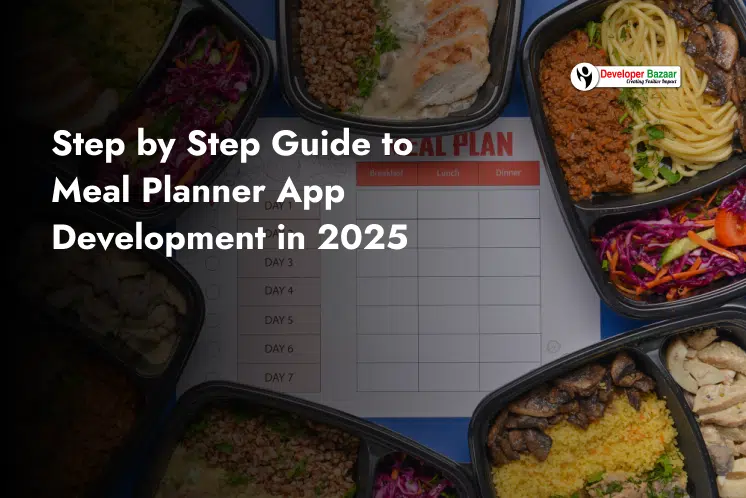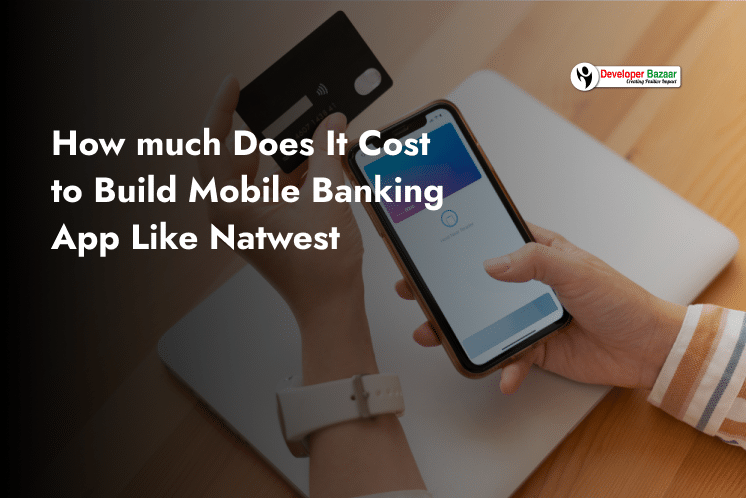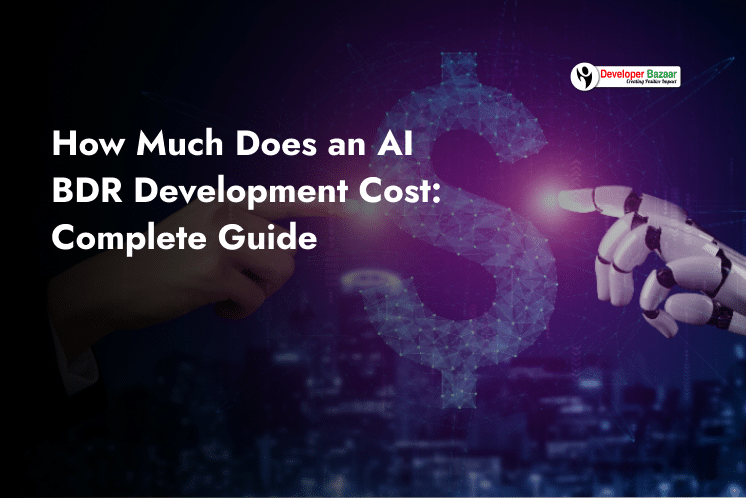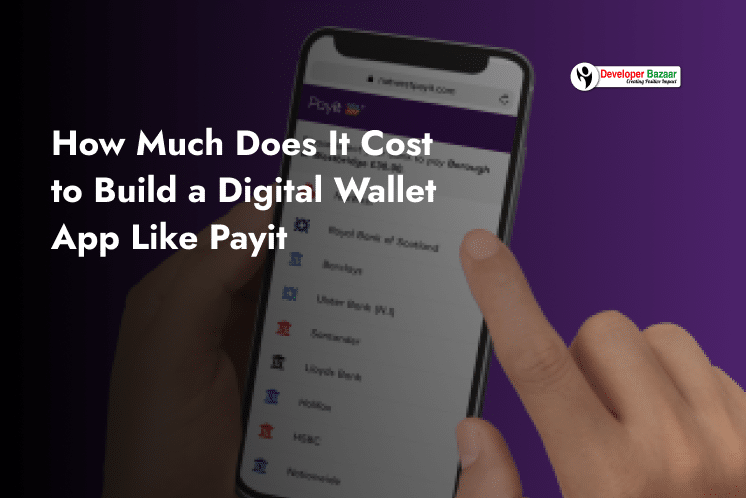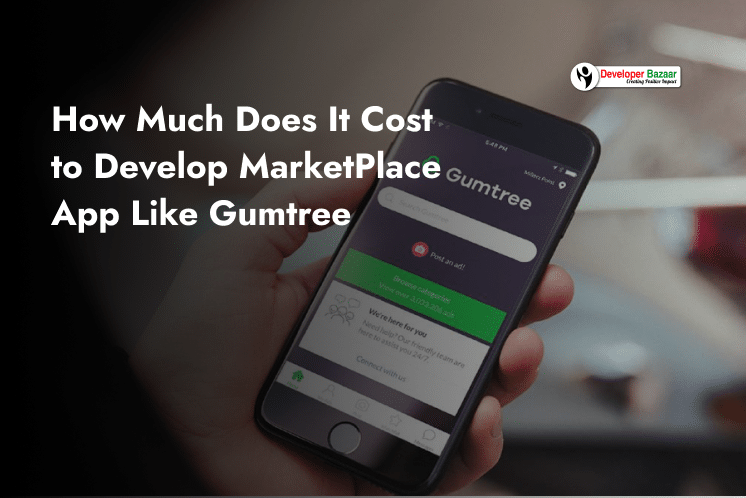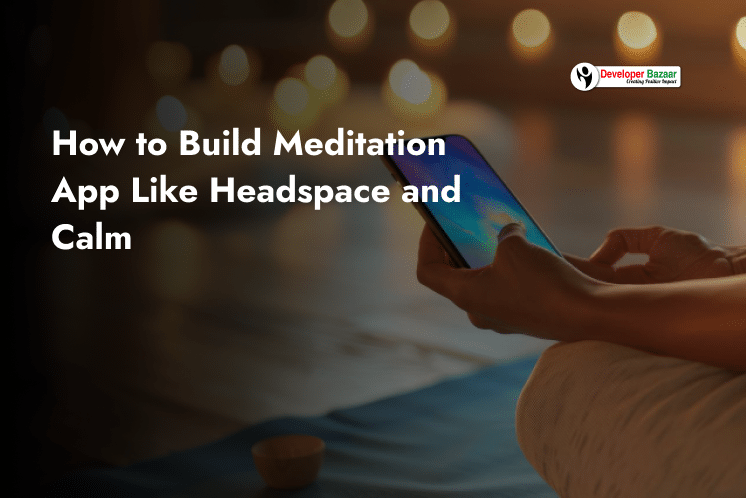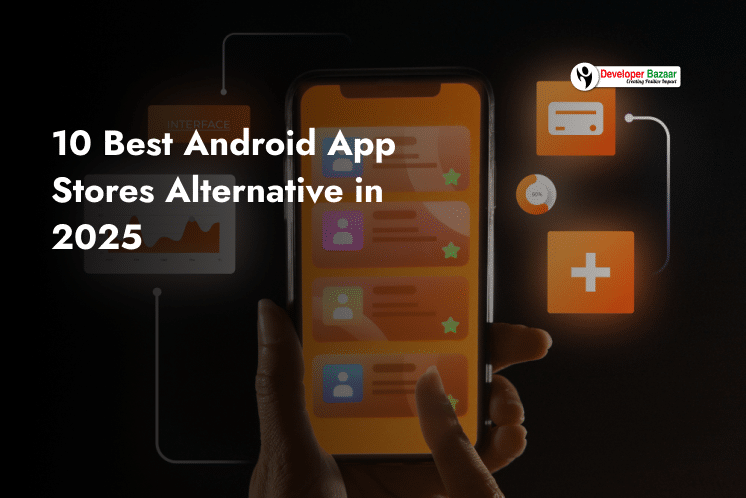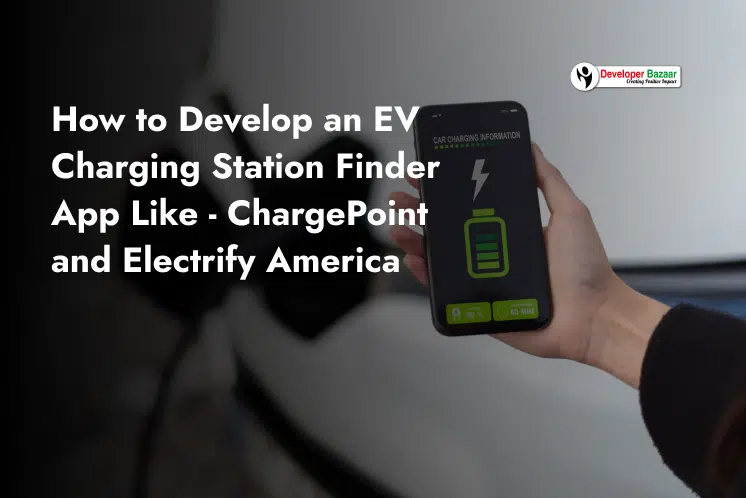Table of Contents
ToggleMore people are focusing on a healthy diet these days, and most use the meal planner app to get a healthy diet plan. Because they feel these apps help them adopt a healthy lifestyle with ease in their busy routines.
If you are an entrepreneur or an industry leader, you would opt for such apps so you can stay competitive in the market.
In this comprehensive article, you can explore in-depth information about the meal planner app development, market insights, how much it will cost, latest technology, and many more.
So, let’s get started with the current market insights and know the reason why these apps are gaining so much popularity.
Why Meal Planner App Gains Popularity: Market Insights
Nowadays, People are serious about eating healthy and keeping track of their food habits. Meal Planner apps make this easier. It helps users to monitor their daily calorie intake, track their meals, and stay focused to achieve their health goals.
That’s why these apps have become super popular, especially among fitness enthusiasts and health-conscious individuals.
The market for such kinds of apps is growing rapidly. A study shows that the market value was USD 2.21 billion in 2024 and is expected to reach USD 5.53 billion by 2033 at a compound annual growth rate (CAGR) of approximately 10.5% from 2025 to 2033.
Meal planning apps have become critical resources for anyone looking to manage their nutritional options, simplify their meal planning process, and properly arrange their grocery shopping.
With customized meal planning, recipe databases, and automated grocery lists, these applications offer many features.
If you’re looking to enter into the health and wellness industry, it is the right time to invest in a meal planner app development.
What is a Meal Planner App, and How Does It Work?
A meal planner is a mobile app or software that helps people plan their meals. It shares easy recipe ideas so users can have a healthy diet, allows users to track nutrition, and provides features so they can create shopping lists based on chosen meals.
These apps work by allowing users to:
- Choose Recipes - Users can browse a collection of recipes and select meals they want to prepare.
- Create a Meal Schedule - The app helps plan meals for the day or week, ensuring a balanced diet.
- Generate Shopping Lists - Based on the chosen meals, the app automatically lists the ingredients needed.
- Track Nutrition - Many apps also show calorie counts and nutritional information to help users make healthier choices.
Meal Planner Applications save time, reduce food waste, and make it easier to follow a healthy diet.
Whether you’re a busy professional or someone looking to improve eating habits, these apps provide a simple and stress-free way to manage meals.
Must-Have features of Meal Planner Apps
A good meal planner app should be easy to use and help people plan their meals without any difficulties.
Below are some important features that make a meal planner app helpful and user-friendly:
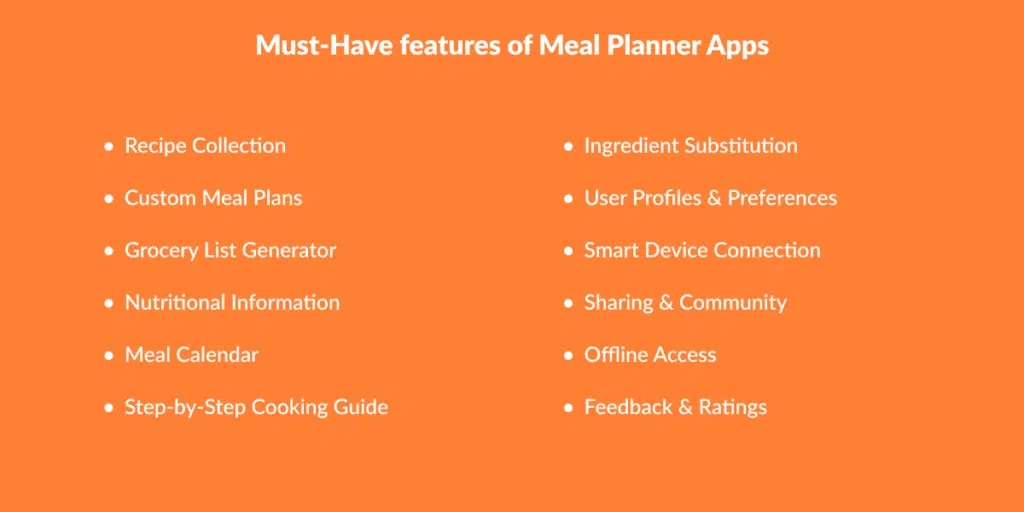
1. Recipe Collection
A meal planner app should have many recipes from different cuisines. It helps users to search and filter recipes based on their diet, cooking time, and ingredients they have at home.
2. Custom Meal Plans
Everyone eats differently, has their taste and preferences, so the app allows users to create their meal plans for breakfast, lunch, dinner, and snacks. They should also be able to swap, add, or remove meals as per their liking.
3. Grocery List Generator
The app enables shopping easier by creating a list of ingredients based on the user’s meal plan. It is easier when users can edit the list, check off items they’ve bought, and even connect it with grocery delivery apps.
4. Nutritional Information
People want to eat healthy, so the meal planner app has features to show details like calories, proteins, fats, and vitamins for each meal. This helps users choose food that fits their diet and health goals.
5. Meal Calendar
While developing a meal planner app, do not forget to add a calendar feature. It enables users to see their weekly or monthly meal plan at a glance. This helps them stay organized and plan meals ahead of time.
6. Step-by-Step Cooking Guide
It would be very useful for the users, if they could cook their meal easily. The app should provide simple cooking instructions with timers so users can follow the cooking steps without getting confused.
7. Ingredient Substitution
Add features to tell the users the ingredient substitution with their nutritional value. Sometimes, the user doesn’t have a particular ingredient, in that case, the app should suggest alternatives so they can still cook their meal.
8. User Profiles & Preferences
App allows users to create a profile with their dietary needs, favorite foods, and health goals. The meal planner app suggests meals that match their preferences.
9. Smart Device Connection
It is useful to add smart device connection features. This feature helps to connect the device with smart kitchen appliances like ovens or slow cookers, so users can control cooking settings directly from the mobile planner app.
10. Sharing & Community
It is like fun and interactive features. Users should be able to share their favorite recipes and meal plans with friends or a community of food lovers. They can also discover new recipes from other users.
11. Offline Access
Add an offline access within the app so it can work without the internet as well. Users should be able to view their meal plans and recipes anytime, and the app should update automatically once they go online.
12. Feedback & Ratings
Users should be able to rate and review recipes. This helps others pick the best meals and gives developers ideas for improving the app.
By including these features, you can build a meal planner app that becomes a helpful tool for anyone looking to eat healthy, save time, and make cooking fun.
How to Develop a Meal Planner App in 2025?
Developing a meal planner app might be a complex task. But by following 7 easy steps, you can build a useful and user-friendly app.
Step-by-step guide to help you:

1. Research the Market
Before developing your Meal Planner App in 2025, you must have clear objectives about your aim. And look for a competitor’s analysis.
Ask yourself
- Do you want users to plan their meals easily?
- Should it help people track nutrition and diet?
- Do you want it to generate a grocery list?
- Or should it do all of the above?
Once you have a clear purpose, decide which devices your app should work on, Android, iOS, or both. Also, list the features you want, such as meal suggestions, calorie tracking, or recipe storage.
2. Know Your Target Users & Gather Developer’s Team
Understand who will use your app. Are they busy professionals, parents, or fitness lovers? Knowing your audience helps you design features that match their needs, like quick meal ideas or diet-friendly recipes.
Building A meal planner app requires technical skills. If you don’t have experienced developers, you can hire professional developers or work with an app development company.
Experts will help you build the app smoothly while you focus on other important tasks.
3. Design the App (UI/UX)
The design of your app is very important because users will interact with it every day.
So, your meal planner app must look good in terms of visuals, and be easy to use. A clean design helps users find what they need quickly.
Use simple colors, clear buttons, and easy navigation so that even beginners can use the app without confusion.
4. Choose the Right Technology
It is crucial to select the right tools to develop your meal planner app. You need a strong backend to store recipes and user data, and a smooth frontend to make everything run properly.
The app should work well on all devices, whether it’s a phone, tablet, or computer.
5. Develop Important Features
You must include the following features in your meal planner app:
- A recipe library with different meal options.
- A meal planner to help users schedule their meals for the week.
- A grocery list maker that lists ingredients needed for selected meals.
- Nutrition tracking to show calorie and nutrient details.
6. Test the App for Errors
Before launching your meal planner application, test the app on different devices to check for bugs. Fix any problems that make the app slow, difficult to use, or inaccurate. Testing ensures that users have a smooth experience.
7. Launch and Improve the App
Once your app is ready, release it on app stores. Ask users for feedback and keep maintaining and updating the app based on the user’s suggestions and latest market updates.
By following these steps, you can build a successful meal planner app that helps people plan their meals easily and stay healthy.
How Much Does It Cost to Build a Meal Planner App in 2025?
The cost of developing a meal planner app depends on different factors like design, features, and platforms (Android, iOS, or both). On average, the budget can range from $10,000 to $5,000.
Below is the estimated meal planner app development cost for your reference:
| Development Process | Estimated Cost (USD) |
|---|---|
| UI/UX Design | $2,000 – $5,000 |
| Frontend Development (Android & iOS) | $5,000 – $12,000 |
| Backend Development | $3,000 – $8,000 |
| Admin Panel (Web-Based) | $2,000 – $5,000 |
| API Integration (e.g., Payment, Recipe Database) | $1,000 – $3,000 |
| Testing & Bug Fixing | $1,000 – $3,000 |
| Maintenance & Updates | $1,000 – $4,000 (yearly) |
Tip: The final cost depends on the complexity of the app, the number of features, and the team you hire.
If you choose to build a basic version, the cost will be lower, while an advanced version with more features will require a higher budget.
Top 5 Meal Planner App in the Market
Meal planner apps help people organize their meals, save time, and eat healthier.
Below are the top 5 meal planner apps that are popular and useful:

1. Mealime - Best for Personalized Meal Plans
Mealime is a great app for anyone who wants customized meal plans. It suggests meals based on diet preferences, allergies, and portion sizes.
The app provides easy-to-follow recipes with step-by-step cooking instructions, nutritional details for every meal, automatic grocery lists for quick shopping, and a variety of cuisines to suit different tastes.
2. Yummly - Best for Recipe Collection
Yummly offers thousands of recipes from top food blogs and websites. It is great for people who love discovering new dishes.
This meal planner app provides personalized recipe recommendations based on your taste, smart search filters to find recipes quickly, shopping lists for easy grocery planning, and integration with smart kitchen appliances.
3. Plan to Eat - Best for Custom Meal Planning
If users want to customize their meal plans, Plan to Eat is a good choice. This app lets users import recipes from websites or add their own, drag and drop meals onto a calendar for easy planning, generate shopping lists based on your meal plan, and organize meals with notes and tags.
4. Prepear - Best for Meal Organization
Prepear is an all-in-one meal planning app. It helps with custom meal plans and built-in grocery lists.
It allows users to save and organize recipes from different sources, cooking videos and tutorials for easy learning, and meal sharing and collaboration for families and groups.
5. Eat This Much – Best for Automatic Meal Planning
Eat This Much creates meal plans automatically based on your food preferences and health goals.
This meal planner app includes personalized meal plans with recipes and grocery lists, tracking of macros and calories, options to adjust portion sizes and meals, and budget-friendly meal planning.
All these apps make meal planning easier and stress-free. Whether you want custom meal plans, a big recipe collection, or automatic meal suggestions, these apps have something for everyone.
Generate Revenue From the Meal Planner App Development
A meal planner app is not just a helpful tool for users but also a great way to earn money.
If you are planning to build a meal planning app in 2025, here are some simple ways to make money from it.
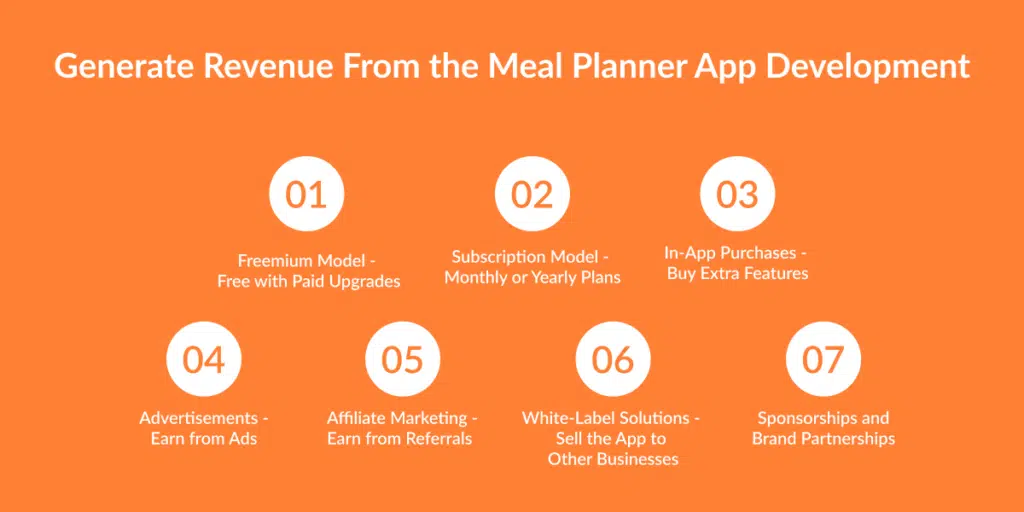
1. Freemium Model - Free with Paid Upgrades
You can start with a free version of the meal planner app that includes basic features. Then, offer a premium version where users can pay to unlock extra features like more meal plans, exclusive recipes, personalized diet recommendations, and an ad-free experience.
This way, users can try the app for free and upgrade if they want more benefits.
2. Subscription Model - Monthly or Yearly Plans
In this model, charge users to pay a small monthly, quarterly, or yearly fee to access all the app features. You can offer different subscription plans to fit different budgets.
A basic plan can have simple meal planning features, while premium and family plans can include advanced tracking and shared meal planning options.
3. In-App Purchases - Buy Extra Features
Allow users to buy special features or extra content within the app. These could be premium meal plans for weight loss or special diets, exclusive recipes and cooking guides, or custom grocery lists for easy shopping.
Users can choose to pay only for what they need, making the app flexible and profitable.
4. Advertisements - Earn from Ads
Show ads inside the app to earn money. You can use banner ads, video ads, or sponsored content where brands pay to promote their products.
It is important to make sure ads are not too annoying so users still enjoy using the app.
5. Affiliate Marketing - Earn from Referrals
Partner with food brands, grocery stores, or kitchenware companies. When users buy products through the app’s links, you earn a commission.
The app can recommend specific grocery items, kitchen tools, or meal delivery services, allowing you to generate revenue from user purchases.
6. White-Label Solutions - Sell the App to Other Businesses
If you develop a meal planner app and other businesses may want to use your app with their branding.
You can sell them a white-label version, where they pay to use your app under their own name.
This is a great way to sell your technology to fitness trainers, dietitians, or corporate wellness programs.
8. Sponsorships and Brand Partnerships
Partner with well-known food brands, nutrition experts, or chefs to offer branded content. They can pay to promote special recipe collections, sponsored meal plans, or discounts on healthy food products.
This creates a situation where users get valuable content, and you earn revenue.
By using these simple methods, you can turn a meal planner app into a successful business.
Key Technologies Used to Develop a Meal Planner App
Developing a meal planner app needs the advanced technologies to provide users with smooth functionality, accurate nutritional data.
The following key technologies used in building such an app:
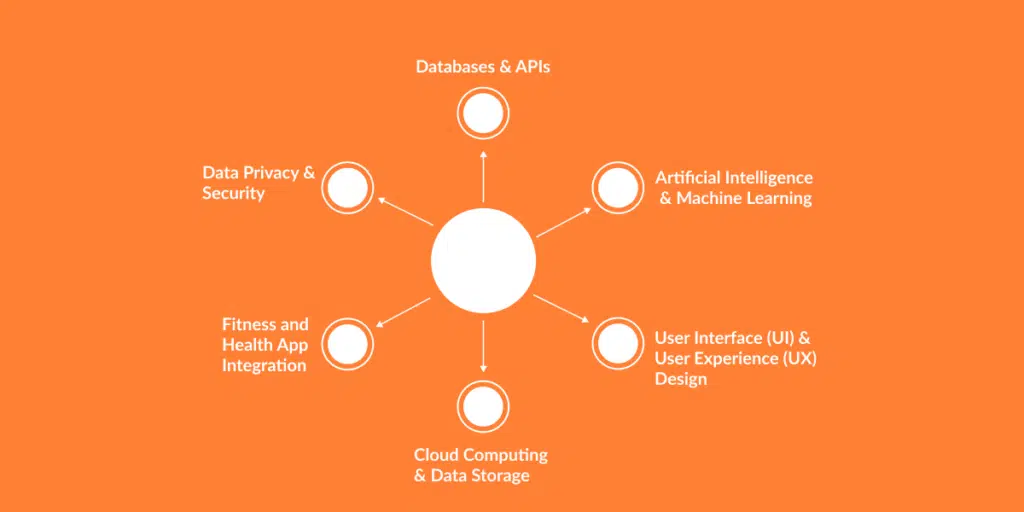
1. Databases & APIs
Meal planner apps depend on large databases that store recipes, ingredients, and nutritional details. They use APIs like the USDA Nutrient Database or FoodData Central to provide real-time data on calories, macronutrients, and more.
These integrations make sure users receive accurate and up-to-date nutritional information.
2. Artificial Intelligence & Machine Learning
AI and machine learning play a vital role in customizing meal plans based on user preferences, dietary restrictions, and health goals.
AI analyzes meal history and offers personalized recommendations, making the app more useful for users with different needs.
3. User Interface (UI) & User Experience (UX) Design
A good meal planner app must have an intuitive and attractive interface. Technologies like React Native, Flutter, or Swift help in developing mobile applications, while React.js, Angular, or Vue.js are used for web versions.
Features like drag-and-drop meal scheduling and automatic grocery list generation improve user experience.
4. Cloud Computing & Data Storage
Cloud platforms like AWS, Google Cloud, and Microsoft Azure help store large amounts of data, ensuring fast access to meal plans and real-time updates across multiple devices.
Cloud-based data storage also improves app performance and scalability.
5. Fitness and Health App Integration
Many meal planning apps connect with fitness apps like Google Fit, Apple Health, and Fitbit.
This allows users to sync their calorie tracking, set fitness goals, and receive meal suggestions that align with their workout plans.
6. Data Privacy & Security
Since meal planner apps handle personal health and dietary data, strong security measures like encryption and compliance with privacy laws (e.g., GDPR, CCPA) are crucial. Secure storage ensures user data is protected from unauthorized access.
These technologies help create a smart, user-friendly, and efficient meal planner app that benefits users while maintaining security and seamless functionality.
Final Thoughts
Meal app planner development in 2025 is all about providing users with smart, personalized, and efficient solutions for managing their meal as per the balanced diet. Such apps show how technology can help users track their meals, nutrients, and diet, which helps to keep their overall health while improving user engagement.
A mobile app development company with experience in meal planner apps can create reliable solutions that offer customized meal plans, recipe suggestions, and health insights.
With advanced features and a user-friendly experience, meal planner apps continue to evolve, making healthy living easier and more accessible for everyone.
FAQs
Q.1. Can I make money by selling a meal planner app?
A: Yes, if you make a great meal planner app, you can sell your app to the business owner who wants to use the app with their branding. The term known as White-Label Solutions.
Q.2. How much time will it take to develop a meal planner app?
A: Basically, it will take 3 to 6 months to build a meal planner app. It depends on the app complexity. The more complex your app is, the more time it will take to develop.
Q.3. Can a meal planner app be customized for different diets?
A: Yes, developers can add customization features, so users can create their own meal plan as per their diet preferences.
Q.4. What features should a Meal Planner App have?
A: Key features include meal planning, recipe suggestions, grocery list creation, calorie tracking, and integration with fitness apps.
Q.5. Do I need technical knowledge to start a Meal Planner App?
A: No, you can hire a mobile app development company to handle the technical aspects while you focus on ideas and user needs.

RM Mishra
Co-Founder
Developer Bazaar technologies
